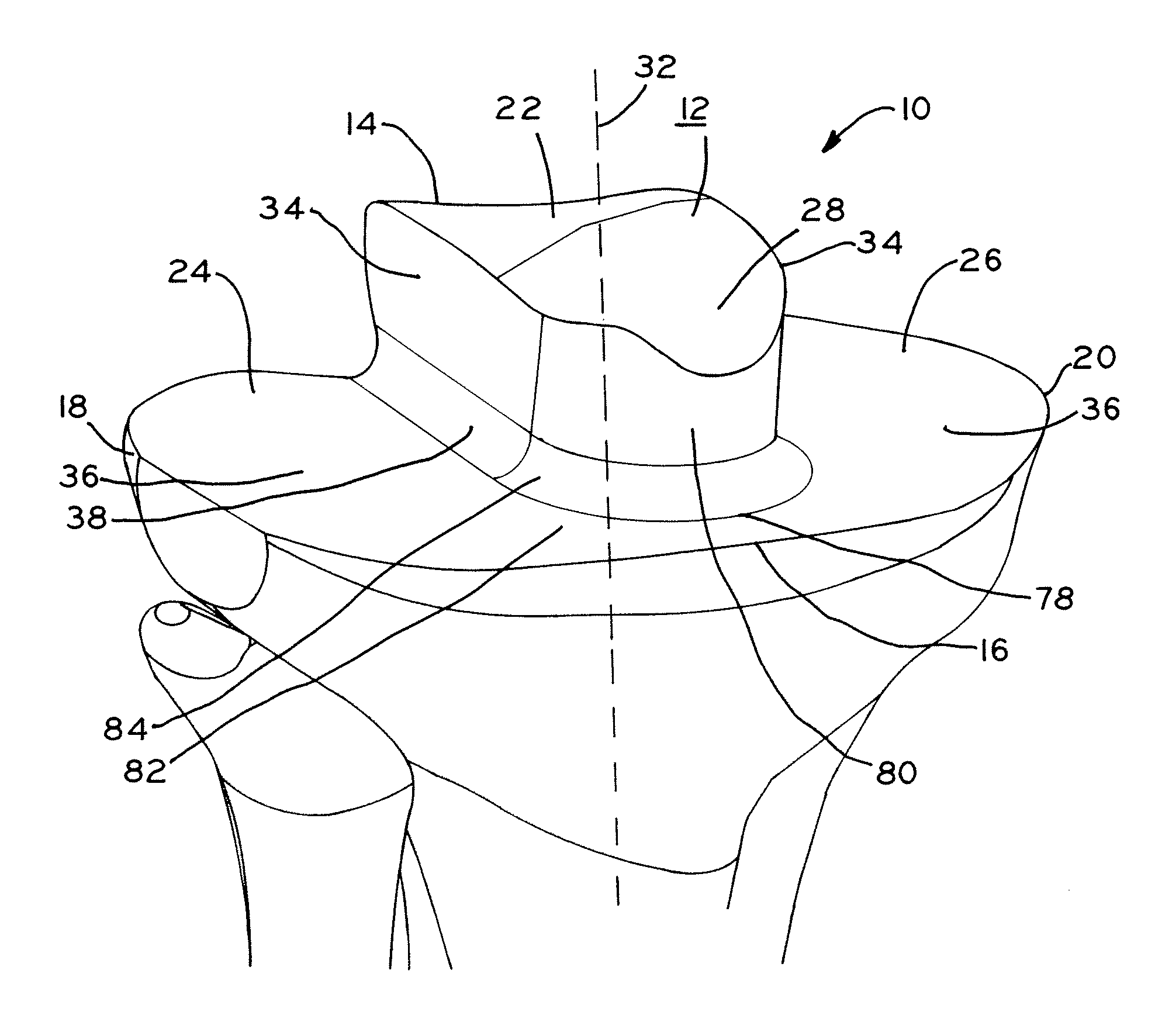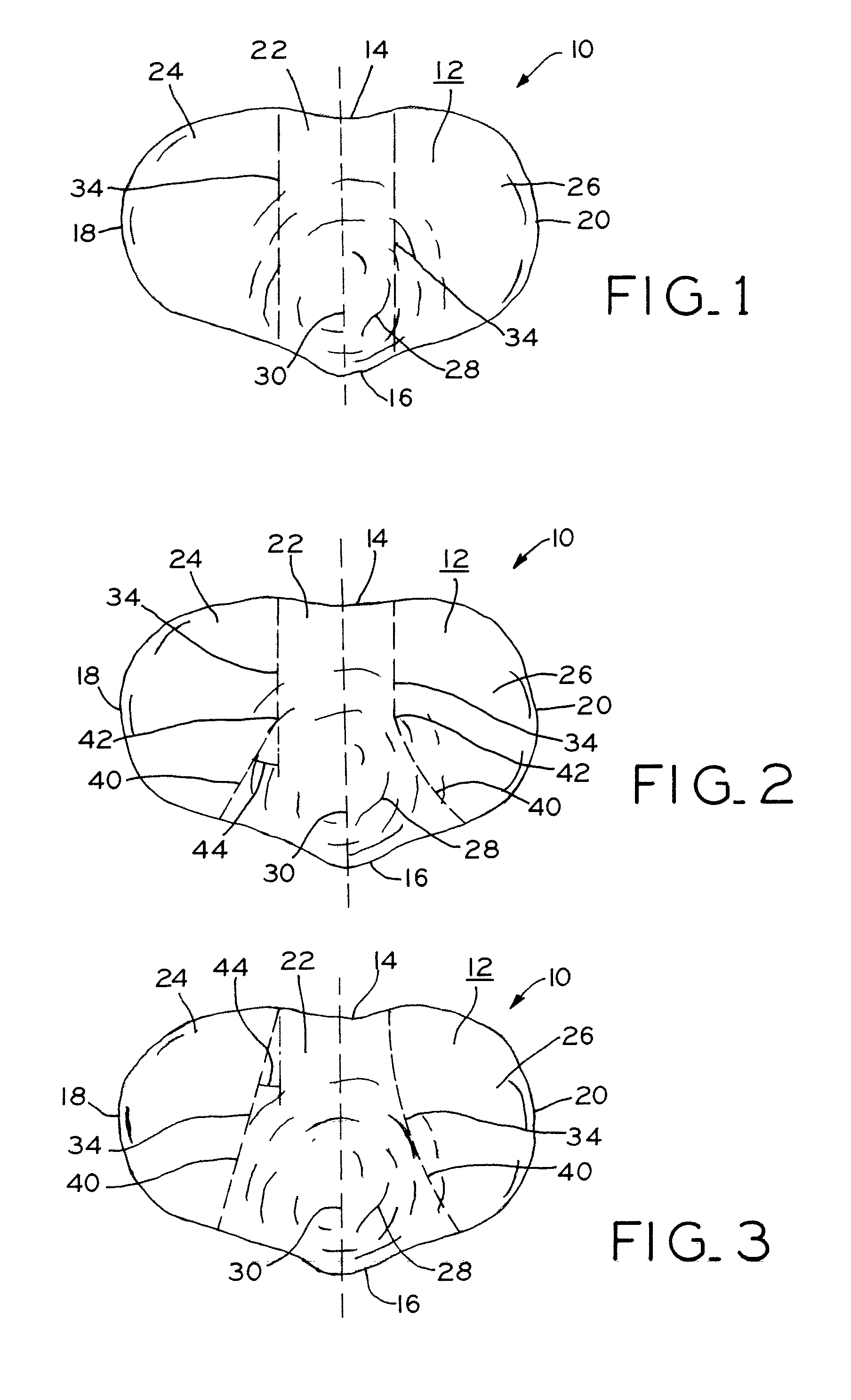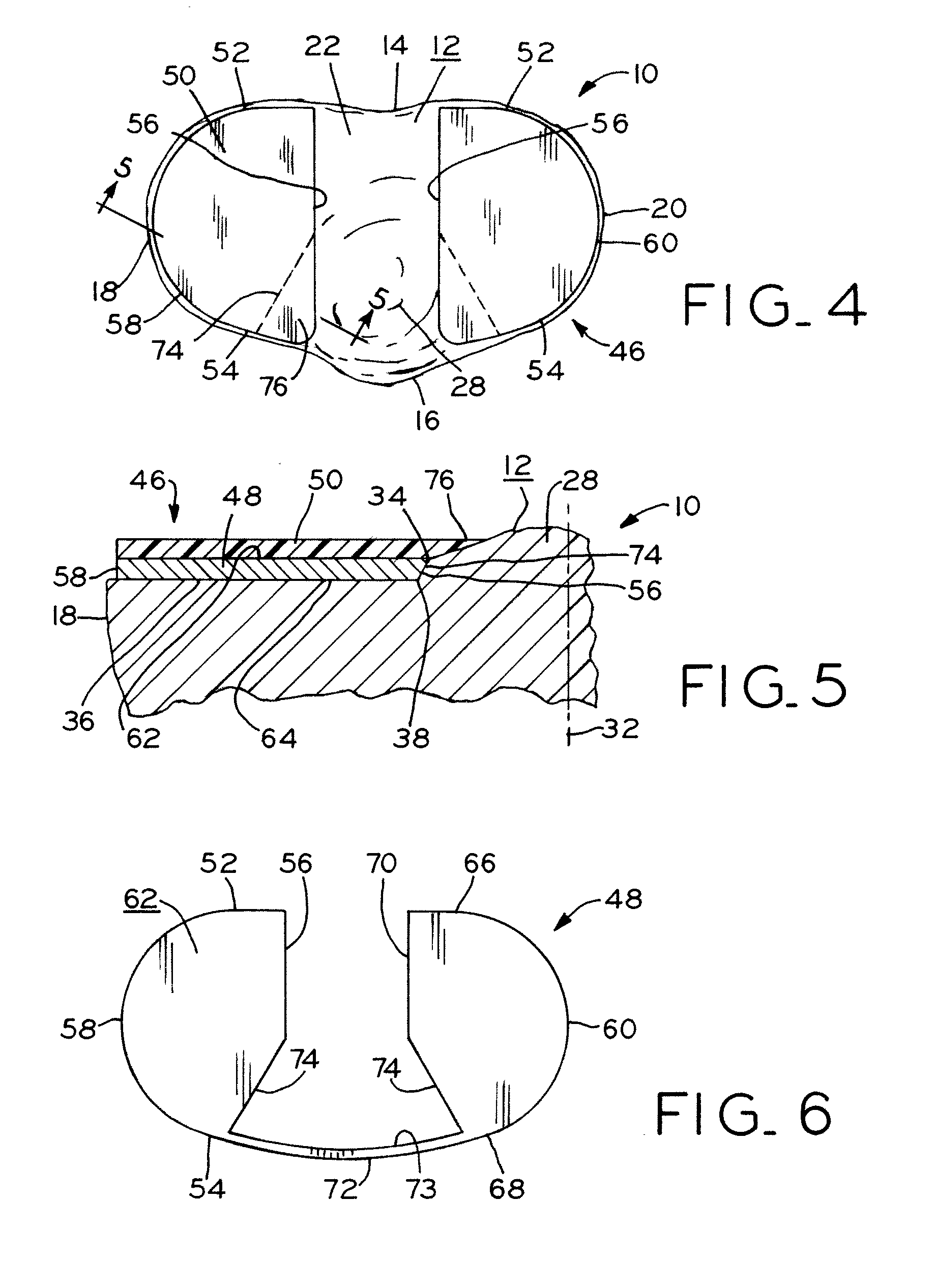Acl accommodating tibial design
a technology of tibial implants and acl, which is applied in the field of surgical methods and tibial implants, can solve the problems of significant damage to affecting and affecting the stability of the tibia, so as to achieve a greater surface for acl attachment and improve the strength of the remaining spinous process
- Summary
- Abstract
- Description
- Claims
- Application Information
AI Technical Summary
Benefits of technology
Problems solved by technology
Method used
Image
Examples
first embodiment
According to the present invention, as shown in FIGS. 1 and 13-14, sagittal cut 34 may extend substantially parallel to dividing plane 30 from posterior edge 14 to anterior edge 16. To accommodate spinous process 28, cut edge 38 between sagittal cut 34 and transverse cut 36 may be at least partially chamfered. In an exemplary embodiment of the present invention, cut edge 38 is at least partially chamfered in the area adjacent to spinous process 28. For purposes of this disclosure, cut edge 38 is “chamfered” whenever sagittal cut 34 and transverse cut 36 intersect to form an angle that is greater than 90 degrees. For example, as illustrated in FIG. 5, a chamfered cut edge 38 may be formed between sagittal cut 34 that is angled away from longitudinal axis 32 and an essentially horizontal transverse cut 36. For purposes of this disclosure, cut edge 38 is also “chamfered” whenever sagittal cut 34 and transverse cut 36 intersect to form a rounded or curved cut edge 38, as illustrated in ...
second embodiment
In another form thereof, illustrated in FIGS. 6 and 9-12, body 48 has both first posterior edge 52 and second posterior edge 66, both first anterior edge 54 and second anterior edge 68, both first inner edge 56 and second inner edge 70, bridge 72 connecting first inner edge 56 and second inner edge 70, bridge 72 having its own bridge inner edge 73, both lateral edge 58 and medial edge 60, top surface 62, and bottom surface 64. First and second posterior edges 52 and 66, first and second anterior edges 54 and 68, first and second inner edges 56 and 70, bridge 72, bridge inner edge 73, lateral edge 58, and medial edge 60 span top surface 62 and bottom surface 64 of body 48. Bridge 72, which connects first inner edge 56 and second inner edge 70, may also connect first anterior edge 54 and second anterior edge 68. Body 48, as set forth in this second embodiment, is designed for use during a bi-unicompartmental knee arthroplasty procedure. Body 48 may be implanted into both resected comp...
PUM
 Login to View More
Login to View More Abstract
Description
Claims
Application Information
 Login to View More
Login to View More - R&D
- Intellectual Property
- Life Sciences
- Materials
- Tech Scout
- Unparalleled Data Quality
- Higher Quality Content
- 60% Fewer Hallucinations
Browse by: Latest US Patents, China's latest patents, Technical Efficacy Thesaurus, Application Domain, Technology Topic, Popular Technical Reports.
© 2025 PatSnap. All rights reserved.Legal|Privacy policy|Modern Slavery Act Transparency Statement|Sitemap|About US| Contact US: help@patsnap.com



